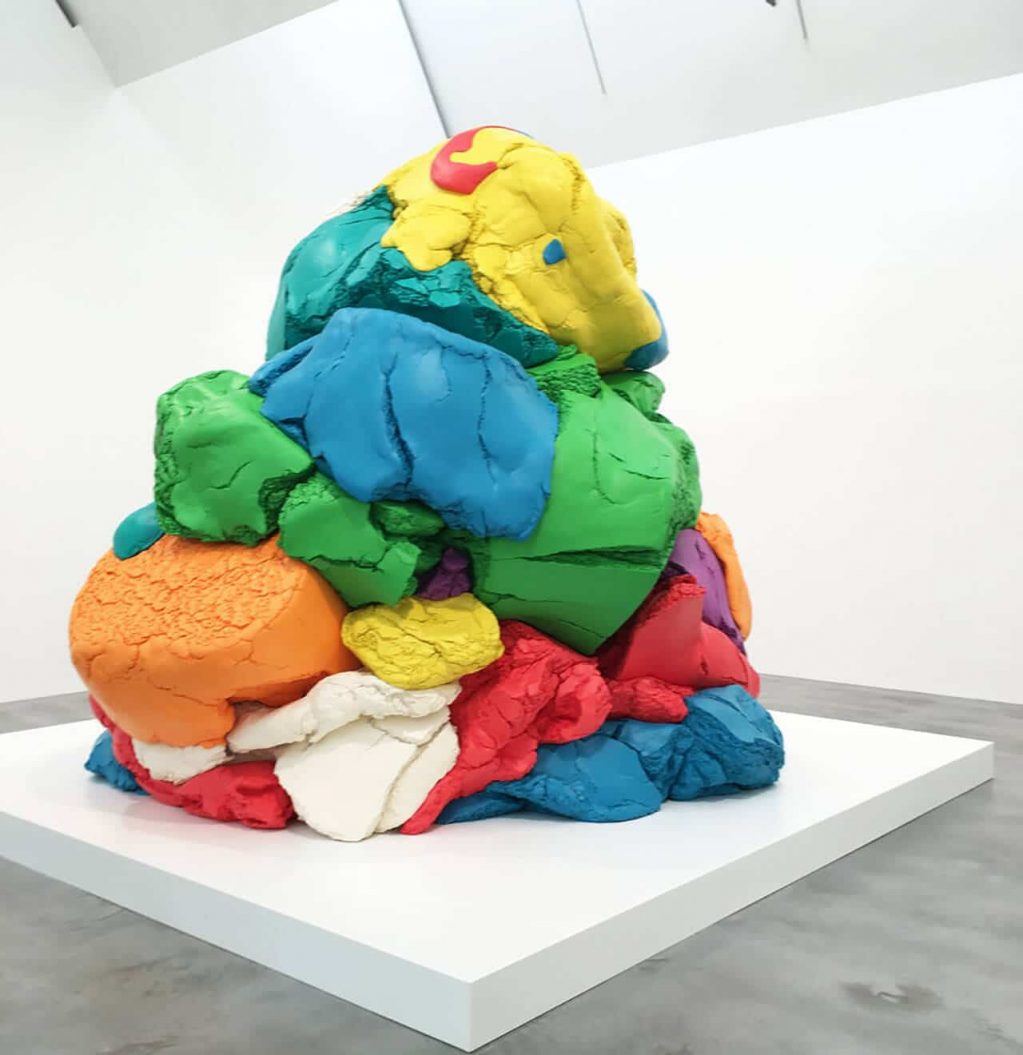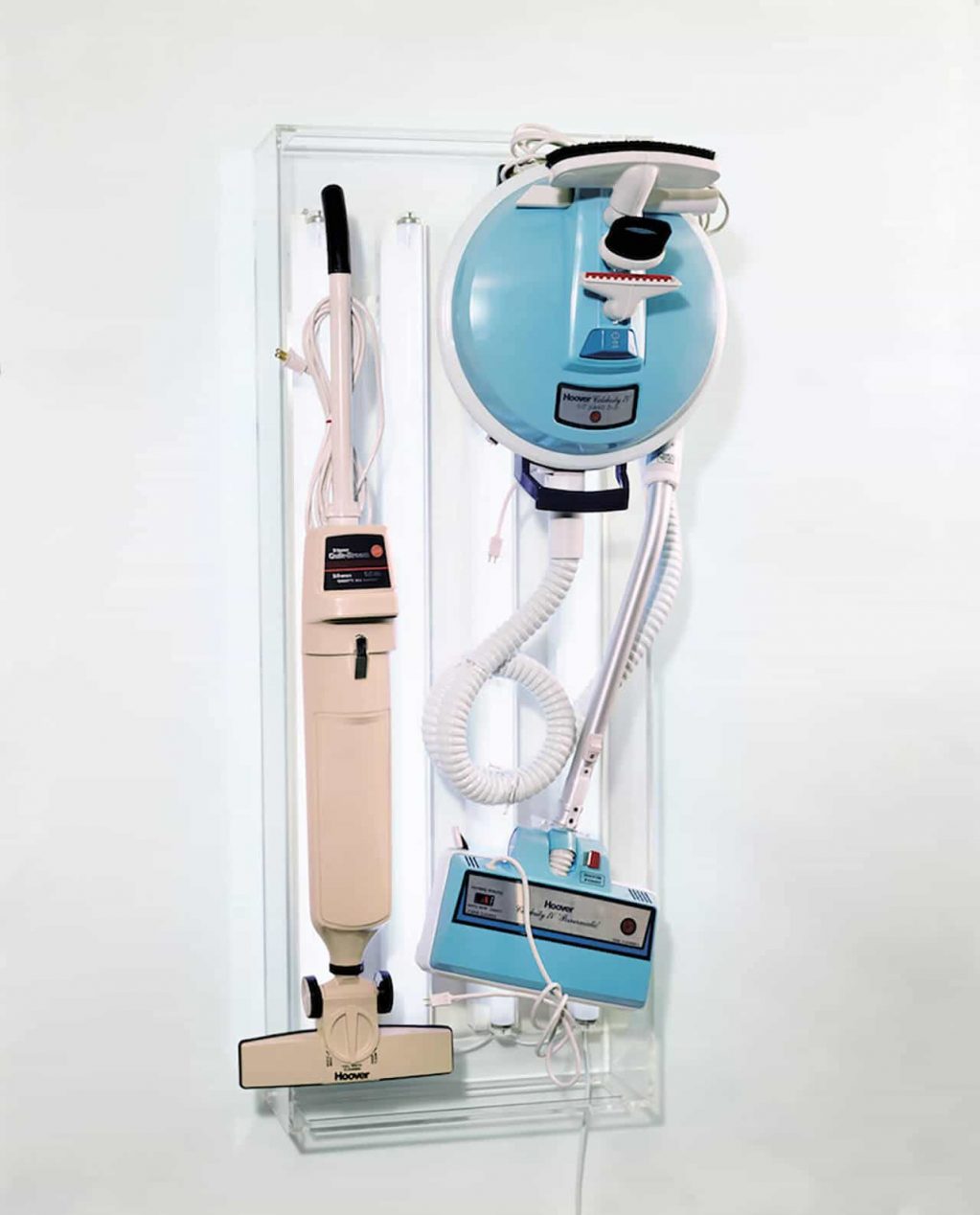The all-American, death-denying artist whose work manages to be surprisingly pitch perfect.
“One of the reasons I’m interested in Jeff Koons is that Jeff is in denial of pain and death, but his denial is very eloquent. In comparison to Damien Hirst who has nothing to say.” *
I like this quote by the American critic and curator Robert Storr, even though I don’t really agree with him about Hirst. I think Hirst has quite a bit to say about death, beyond merely revealing a personal obsession with it. Hirst’s nervy adolescent death-musings are eloquently expressed, and that’s why there’s so much excellent juvenile humour in his work. It’s true that his work isn’t elegiac about loss or anything grown up or substantive in that vein, but then Koons’ denial isn’t remotely grown up either, and this is what shapes him as a significant American artist. He’s so clever, yet so dumb.
Could Koons have self-actualised as the artist he is anywhere else? He could not, for though his lineage includes two Frenchmen, Duchamp and will-o’-the-wisp showman Yves Klein, he is Warhol’s progeny minus the squalor and morbidity. He holds a mirror up to America now, and what it reflects is neither beautiful nor critical.
Damien Hirst is currently showing a mini Koons retrospective in his spacious two-floor gallery in South London. Koons is the artist who, with his Equilibrium series (basketballs in glass tanks improbably suspended in sodium chloride water) and the pristine vacuum cleaners of his series The New, has had the single biggest impact on Hirst. The formal comparisons are obvious, even though the pared-down sleight-of-hand of Koons in those early works is absent.
The exhibition, which features work from Hirst’s own collection, demonstrates again why Koons is rarely as good in two-dimensions as he is in three, though there is at least one exception. Here are two huge photographic works from his lurid Made in Heaven series, featuring in graphic close-up Koons and his then wife, former porn actress Ilona Staller (aka Cicciolina), having hot-porno sex against a garish backdrop – a fairytale grotto-like setting that could be a blown-up detail from a sugary Thomas Kinkade painting. (Arthur Danto’s summing up of Koons’ work as “a vision of aesthetic hell”, from a 1989 review, might, for the high-minded, also apply to Kinkade’s Walmart aesthetics.)
On every conceivable level the images from Made in Heaven are meant as an affront to taste and decorum and that is part of their thrill, if these are indeed the kinds of faux-transgressions you thrill to. But the series at its best also works as a kind of burlesque take on Hollywood film posters.
Where Warhol’s films are grainy, amateur, and often too boring to watch for more than five minutes, and his Screen Tests a knowing and witty inversion of the studio screen test (in which Factory hangers-on were subjected to the uncomfortable scrutiny of the lens with no directions to fall back on), Koons hyper-real, hyper-saturated imagery outdoes the gloss of Hollywood studio production (albeit with deliberately fake-looking sets), while the imputed narcissism of Warhol’s superstars is redirected back on to the artist and his porn star wife. In the most famous billboard poster (not in this exhibition), the series title and the starring credits are displayed, with Koons staring seductively at the viewer, while Cicciolina throws her head back with (fake) orgasmic pleasure.
In the same room, we also find a huge bowl of eggs, all pink and white and about the same size as a minivan. Koons is well-known for sizing things up to gargantuan proportions. From puppies to tulip bouquets his pristine, outsized sculptures are resolutely and anodynely non-threatening. Shorn of any hint of the uncanny, they resist interpretation. And one senses it’s their resistance to meaning that draws fascination, as if they’re an extension of Koons’ own impenetrable persona. Which, to a large extent, they are.
The newest work here is the monumental Play-Doh. Made of polychromed aluminium the giant mountain of different-coloured Play-Doh lumps is a bravura piece of startling facsimile. It luxuriates in its brilliant dumbness, and like much of Koons’ work it takes us back to a state of childhood, when sensation rather than meaning rules. Redolent with nostalgia, this is the nostalgia for consumer goods, of perky television ads and pictures in magazines. It surpasses anything he’s ever done before in this vein.
But I think the best work in the exhibition, and among the best work of Koons’ career, can be found in the first room. Pristine vacuum cleaners line the walls or stand in glass cases, backlit or underlit with fluorescent lights. Minimal, beautiful, suggestive, they look like robots in pods awaiting activation. With their suction tubes and orifices, our thoughts run to penetration, to sex – the ultimate in fetishised consumer object. They date from around 1980, but look older. The date brings you up short: when has human memory ever kept pace with the speed of change? (as in, shit, they look like they should predate me, and they don’t). Koons may deny death, but mortality, with beautiful inevitability, creeps up on his work nonetheless.

